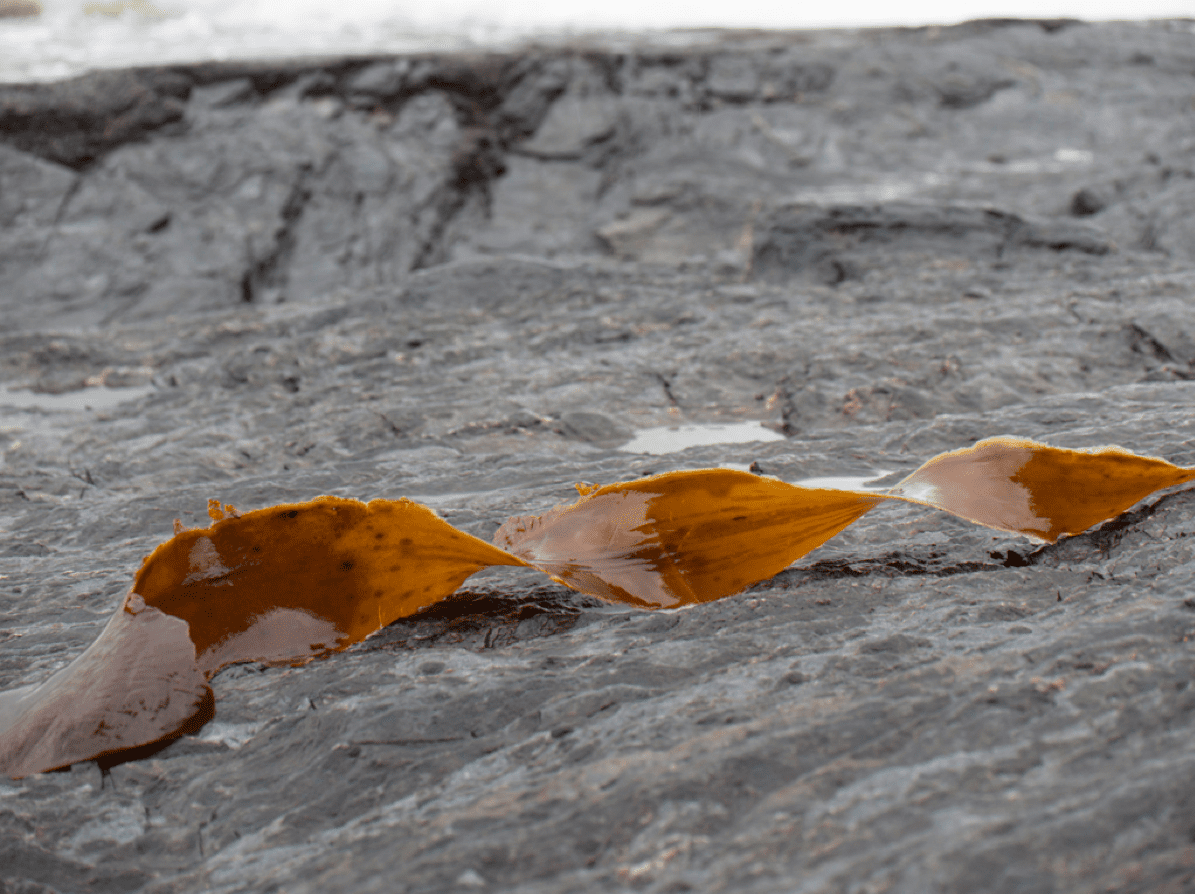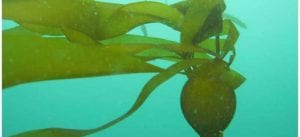Blades of bull kelp take on 3D ruffled shape because of different growth rates along the edge and midline
Bull kelp (Nereocystis luetkeana) is a marine macroalga that resembles a vine-like plant with a long, thin stipe (stem-like structure) up to 30 meters long, anchored to the sea floor by a holdfast (root-like structure). A gas-filled float at the stipe’s other end holds numerous 4-meter-long photosynthetic blades close to the water’s surface. If bull kelp grows at a site exposed to strong wave action, blades are strap-like and flat. If grown at a sheltered site, blades are wide and ruffled. These differences in blade shape are at least partly due to a trade off between reducing drag and increasing solar exposure for (check out the related strategy).
How do bull kelp blades become ruffled? The cause appears to be different growth rates in different parts of the blade. Tissues of an organism can grow at different rates, even within the same appendage such as a kelp blade. For a flat strap-like blade, the tissues at the blade’s edge and the blade’s middle grow at the same rate. But for a ruffled blade, the tissue at the edge lengthens faster than the tissue at the midline. Extra material builds up on the blade’s edge, which then buckles and takes on a ruffled appearance. Because the blade material is flexible, these ruffles can be pushed into different configurations with shorter or longer wavelengths. This growth pattern illustrates a way that simple changes in growth rate can result in more complex 3D shape changes.










